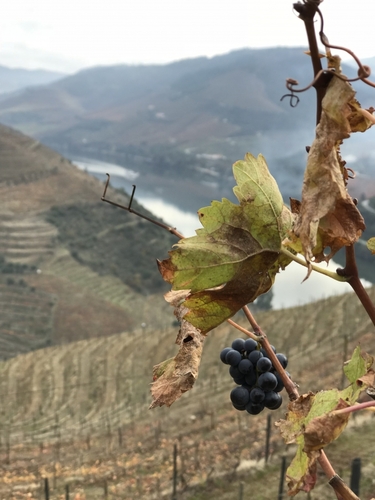BRATTLEBORO — Justly renowned for their fortified wines - port and madeira - Portugal's grape growers and winemakers have long sought to chart the contours of great red table wine.
Though some have planted a few hectares of well-known, “noble” European grapes such as cabernet sauvignon, merlot, syrah, and the rest, many have stuck by their native varietals - touriga nacional, touriga franca, baga, and tinta barroca, among many others. In the past few decades, their oenological explorations have begun to bear fruit.
Nuno Lemos, a Portuguese farmer-scientist with a ready laugh and a glint of divine madness in his eyes, is among these alchemists.
The proprietor, with his wife, Cristina, of Quinta da Travessa, a charming bed and breakfast in the tiny, picturesque town of Covelinhas on the banks of the Douro River, Lemos has for years made a study of which grapes to grow, and how to grow them best, on the steep terraces that girdle the dizzying slopes where he lives.
Of the vines he has planted - souzão, touriga nacional, touriga franca, tinta roriz (a.k.a. tempranillo), and barroca - Lemos says, “These are the children. Our function is to help. I must orient and help the vineyard to produce the best grapes.”
“But nature is the principle. The nature of the soil is there. The climate is there,” he says. “And you must choose the best variety for this locale.
“After this, you go with the plant. With them. I understand the plant. I understand what it needs. And I help.”
* * *
As viticulture technician and principal grower for the nearby Quinta da Levandeira do Roncão winery, Lemos faces a host of challenges: micro-variations in climate which depend on the curve of a particular hillside; mists from the river that modulate temperatures but also introduce mildew-breeding moisture; scorching summers that can shrivel grapes; and a fickle soil composed of fecund schist riven with seams of granite.
Tough as it is, the land on which Lemos labors is also utterly enchanting.
Every inch is carved with winding terraces of vines and bushy olive trees, and the effect from a high lookout is as though the concentric lines of a topographic map had been pushed up into three dimensions.
The golden Douro meanders among these fertile hills, furrowed here and there by the snowy wakes of touring boats. At the edges of steep vineyard roads, shards of blue pottery peek from the riprap. Fat European bumblebees cruise drunkenly among vines enfolding sunny stands of prickly pear. Hidden groves of orange trees light up the green couloirs.
There is a sense that this is a place outside of time.
The Romans drank wine from these vineyards, though not from these vines. In the late 19th century, most of Europe's vineyards were infested by phylloxera, a ravenous plant louse. By some estimates, 90 percent of European grapevines were destroyed.
Of North American origin, the tiny, mutating fly would attack continental plants but ignore the more resistant flora of its native provinces. Grafting venerable European vines onto plucky American rootstocks may have occasioned some Gallic grumbling, but it solved the problem.
* * *
Lemos, a dynamo in Xanadu, surveys his 19 hectares like the commander of an army. Producing the best crop each year, he says, is a kind of friendly competition.
“It's a war between the farmers,” he says. “A good war.”
He grew up here. His grandfather, a doctor, planted grapes, then was called off to fight in a not-so-good war, battling the Germans in Flanders in 1918 at La Lys.
When his grandfather returned, weakened from gas exposure, he lived with his wife in a stone house that still stands among the vines. These days, his grandson stalks the same land, plucking samples as he goes.
“When you hit the seeds with your teeth,” Lemos says, “and it crunches, and it's dry, normally they are in the right maturation. It's dry, no flavor. Because inside the seeds there is an oil. If you try the grape without maturation and you do this, it is astringent.”
The same grapes will be crushed - some of them trodden by foot in traditional stone tubs known as lagares - and then transformed.
* * *
“Red wine is a drink for health,” Lemos says, flashing his avid smile. “And it's very good with everything. With friends, with cheese.”
“If you drink moderately, I think it's the best drink. People are more sincere, more open. They tell the right things with an open heart.
“They don't hide the real things. You know? It helps.”
He pauses a moment, looking thoughtful, then says it again: “It helps.”
